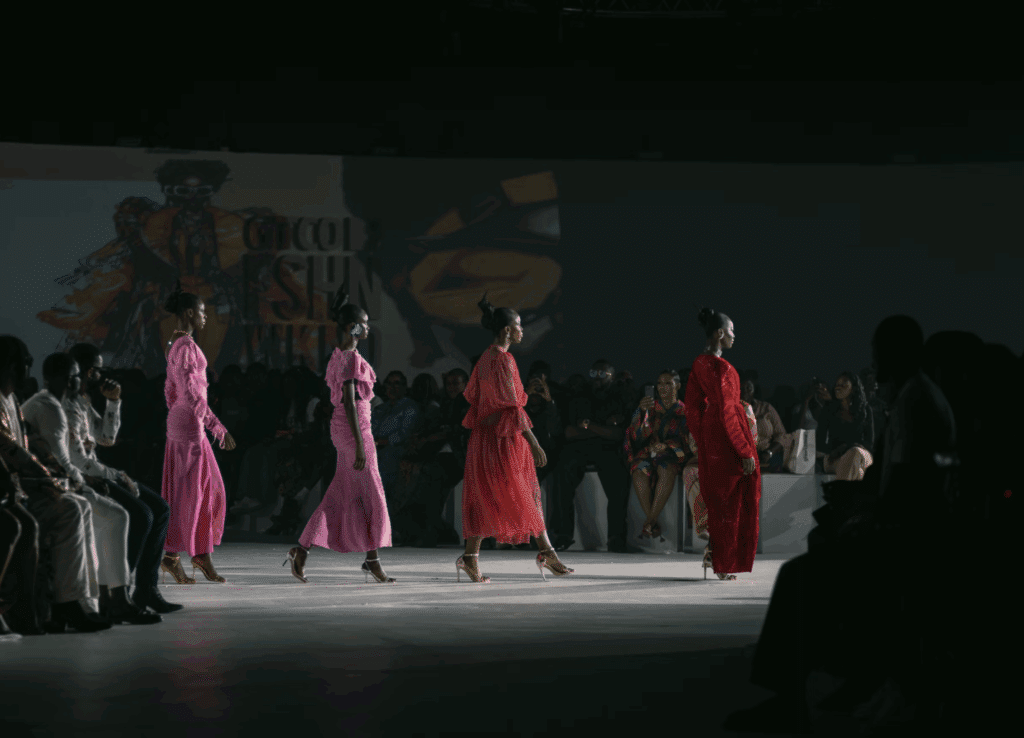A massive geographic shift is underway in the garment manufacturing industry. China, once a magnet for overseas manufacturing, is swiftly being replaced by Southeast Asia and South America. While this is an industry that is changing in locale and magnitude (the number of registered manufacturing enterprises is on the rise, as is the value of total garment exports in most of these regions), garment manufacturing, as a whole, is still rife with sexual abuse, physical dangers, and slavery for those working within it – and increasingly growing profits for Western retailers tied to it.
The garment and textile manufacturing sector similarly continues to fall short in terms of ethical manufacturing and many of the publicly-facing initiatives and consumer-friendly narratives are doing little to help solve these problems. We take an in-depth look at two of the site’s most highly-covered topics: The state of manufacturing that supports not only fast fashion retailers but many brands that occupy higher positions/higher price points within the fashion industry, and the impact that this industry has on female laborers.
Overview
The site of many of the world’s manufacturing capitals, Southeast Asia’s garment manufacturing and textile industries lacks well-established legal protections and standards that weigh in favor of fairness and transparency both for laborers and the environment, alike. The existence of such informal labor sectors, coupled with the gender-specific vulnerabilities that garment factory owners and operators prey upon, make it so that women are provided with employment opportunities, but not without falling victim to an array of abuses.
Historically, apparel manufacturing has been one of the most female-dominated industries in the world. At present, over 75 percent of individuals working in the global garment manufacturing supply chain are women, according to the Clean Clothes Campaign. As a result, it has provided women with jobs and incomes that they otherwise might not have been able to achieve.
However, apparel manufacturing in Bangladesh, India, Thailand, Vietnam, Cambodia, and Pakistan, is consistently plagued with harsh conditions that include long hours; low and inconsistent pay; verbal, physical and sexual harassment and abuse; and violations of health, safety and labor standards. This reality demands discussion about how women manufacturers are not only entitled to employment, but that such employment should not come at the expense of the observation of legal labor practices (at least in terms of Western law) and ethics concerns, safety standards, and an absence of gender discrimination (Note: Women in the supply chain are routinely paid only 60 percent of what men are).
Moving Into and Out of China
For decades, China enjoyed a position at the top of the garment manufacturing totem pole. In the mid-1970’s – not long after the U.S. and China began to develop unofficial trade, educational, and cultural exchanges – Americans began to consume billions of dollars in cheap Chinese goods, including garments made from Chinese textiles and manufactured in Chinese factories.
Outsourced operations in China, as well as in other developing countries in Asia, and in Central and South America, allowed for markedly cheap labor and raw materials. Such manufacturers also boasted the capacity to quickly product sizable orders for a fraction of the cost of domestically-made goods.
In the 1980’s, when about 70 percent of American-sold clothing was still being manufactured domestically, a number of the nation’s biggest retail chains, such as Gap and J.C. Penney, stopped producing garments of their own. Instead, they began transferring production to third-parties in the Far East and in Central and South America.
The retailers acted, in large part, in response to preferential trade pacts like the North American Free Trade Agreement (“NAFTA”), which came into force on January 1, 1994. NAFTA eliminated trade barriers among the U.S., Mexico, and Canada. Since then, the percentage of American-purchased garments that are made in the U.S. has dropped to roughly 2 percent.
While scholars and policy makers often disagree about the impact that NAFTA has had on economic growth and job generation in the U.S. (it has proven difficult to separate the deal’s direct effects on trade and investment from other factors), eliminating trade barriers with Mexico and Canada motivated big retailers to source more garments and accessories from Central and South America, where labor costs are lower.
Now the location of manufacturing is shifting once again. Mainstream retailers are not expanding upon their existing Chinese manufacturing ties. Rather, retailers have taken to shunning the nation in favor of even lower-cost apparel manufacturing; Chinese-made goods have simply become “too expensive” to source.
“Everybody believed that China would always be cheaper,” Harold L. Sirkin, a senior partner at Boston Consulting, told the New York Times in August 2015. “But things are changing even faster than anyone imagined.”
While China does not release data on factory closings or relocations, an overwhelming number of retailers are shifting their manufacturing to factories in Bangladesh, India, Thailand, Vietnam, Cambodia, and Pakistan, in response to rising labor costs in China.
Chinese manufacturers have begun to relocate their own factories out of the country. In many cases, “the exodus has been led by the Chinese themselves, who have aggressively moved to set up manufacturing bases elsewhere” in order to hold on to their major clients, according to the Times.
“The change is significant in the past two years, the cost of labor in China has become very high, growing at least 10 percent every year,” said Peter Hopper, Partner at Strategic Decisions Group, a management consulting firm specializing in strategic decision-making, in 2015.
Moreover, the landscape has changed. China is simply attracting different companies than it used to. “With decades of experience, the Chinese labor force has stepped up on productivity and skill level … Therefore, garment manufacturing, which is a low-skilled, labor-intensive industry, seems more suitable for Bangladesh today,” according to research from CEIC, a consultancy charged with compiling economic, sector, and financial data for economic research on emerging and developed markets.
As such, lower cost manufacturing centers have emerged in place of China to meet the needs of many of the most mainstream Western brands – from traditional fast fashion retailers like H&M, Joe Fresh, Uniqlo, and Zara, for example, to those producing licensed brand name goods, such as Tommy Hilfiger and Calvin Klein.
The Development of the Modern Day Supply Chain
Bangladesh has become a capital for textile and garment manufacturing largely because it boasts wages that are among the lowest in the world. Labor in Bangladesh – which is responsible for nearly 90 percent of all garment exports in the world – is cheaper thanks to lower salaries, longer hours, vastly reduced safety and environmental standards, and a workforce that largely consists of marginalized women, who sorely lack any meaningful amount of bargaining power.
Such conditions make garment manufacturing Bangladesh’s “main and most important industry,” according to the European Parliament’s 2014 “Workers’ conditions in the textile and clothing sector” briefing.
In Thailand, the rising demand for cheap, labor-intensive goods from multi-national apparel chains has spurred regional competition. Thailand’s manufacturers, pressured to offer low production costs (and implicitly low labor costs) to land profitable supply contracts, have circumvented labor laws and cut labor costs by relying on subcontractors, rather than employees.
Contractors and Subcontractors
True employees are often subject to regulation, financial benefits, and oversight. In contrast, the use of contractors and subcontractors enables manufacturers to avoid paying for regulation, benefits, or oversight. The majority of Thai garment manufacturing contractors are informally employed and work from their homes, per Women in Informal Employment: Globalizing and Organizing. Most contracted homeworkers are forced “to cover many of the costs of production, including workplace, equipment, and utilities.”
Thailand’s factory owners further cut costs by paying garment and textile industry contractors or subcontractors per garment produced. Workers do not receive overtime pay. Most receive no sick leave or vacation time, let alone paid vacations. Holy days are more often than not disregarded by factory owners and operators. This disregard triggered a large-scale protest last March in Yangon Region’s Hlaing Tharyar township in Myanmar, in which factory workers demanded time off for the Myanmar New Year holidays.
Such cost-cutting measures are attractive to retailers, as “manufacturers underbid each other for orders from the large retailers, who can demand low-cost production and just-in-time delivery.” (McCormick & Schmitz 2001). By relying on suppliers and contractors, manufacturers can successfully beat out others to get work orders, “then contract out to their subcontractors when they need them – and so on down the global production chain.”
Also attractive to factory owners is the ability to “restrict worker organization and collective bargaining” activities, particularly by contractors, thereby allowing owners to easily employ young women and subsequently force them out when they get married or pregnant, and to skirt paying laborers on time, sometimes forcing them to wait months for a paycheck without any oversight or ramifications.
Unionizing is a luxury for most garment workers. Women laborers have spoken out – often to no avail – about being harassed by employers for attempting to organize other laborers and inform them of their rights. Rukmini, president of the women-led Garment Labour Union, which is based in Karnataka, India, has had to negotiate with some factories to provide “even the most basic facilities like drinking water and ceiling fans, a necessity in a city where temperatures reach as much as [98.6 F] degrees.”
Factories in these relatively new low cost garment manufacturing havens thrive, almost entirely, due to the presence of “a large reserve of unskilled female laborers in the countryside willing to work for low wages in the garment factories (one of the few modern employment opportunities open to them) and in the absence of collective bargaining or other mechanisms for enforcing the national minimum wage and other labor and safety protections,” according to a report from United Kingdom-based labor alliance, Women in Informal Employment: Globalizing and Organizing.
Women working in the garment manufacturing sector suffer from “mental health problems, such as depression and anxiety, and reproductive health issues,” according to a November 2016 report from Equal Times on the state of garment manufacturing in India. This is an unsurprising finding, considering women garment workers regularly endure sexual harassment and workspaces which lack proper ventilation. The latter has given rise in respiratory illnesses among factory-workers.
Apoorva Kaiwar, the South Asia regional secretary for IndustriALL, a global union representing workers across several sectors, who spoke to Equal Times, said she has worked in the garment sector for over two decades, since her husband’s alcohol abuse forced her to provide for their family. “I had two children to bring up. I didn’t know a thing about making clothes. All I knew was there was this opportunity to make some money,” she said.
Her job at an Indian garment factory, which produces garment for brands like H&M, JC Penny, Tommy Hilfiger and Zara’s parent company Inditex, is one of immense pressure. “If you’re late by ten minutes, they will send you home. You don’t drink enough water, because the production targets are so high, you don’t want to waste time in the toilet,” she says.
Trafficking
Issues surrounding labor conditions are compounded by the frequency with which trafficking is specifically associated with garment and textile production. “Labor trafficking is a huge problem globally. There really is not any industry that is immune to this problem,” Agatha Tan, a senior adviser on labor trafficking at the Polaris Project told The Atlantic. And garment manufacturing is certainly not without rampant abuses of this kind.
As noted by both the U.S. Department of Labor and the Global Freedom Center, a U.S.-based non-profit organization dedicated to combatting human trafficking, forced labor in garment manufacturing persists globally. In some instances, women laborers are particularly susceptible to forced labor and labor trafficking as they often live far from the factory in which they work, meaning that they are dependent upon their employers for housing (usually dormitory-style living, complete with bunk beds and concrete flooring), food, and transportation.
An estimated 46 million people are living as slaves, according the 2016 Global Slavery Index by the Walk Free Foundation. Uzbekistan – the world’s fifth-largest cotton exporter, Turkmenistan, and Tajikistan are forcing people to work in the annual cotton harvest. Modern slavery has become a catch-all term to describe “human trafficking, forced labor, debt bondage, sex trafficking, forced marriage and other slave-like exploitation.”
According to the Global Freedom Center, “Trafficking is not only found in settings with thousands of workers in large warehouses, but also in small and isolated manufacturing sites that are less likely to be noticed, let alone inspected. These controlled and isolated environments have led to many cases of labor trafficking of women.”
Employment Without the Abuses
With all of this information readily available, why don’t suppliers act? In light of the need to remain competitive with a host of other developing countries in a brutally cut-throat industry where an overabundance of factories exist, “suppliers simply fail to invest in proper systems and pay practices which would price them out of the market,” according to Michael Lavergne, a supply chain risk management professional with over 15 years of multinational apparel industry experience.
“Many brands and retailers know this,” Lavergne says, “and are fully aware of the deficiencies at factory level because the vast majority of them audit on an ongoing basis. They then put in place corrective action plans which allow for ongoing cycle of audit and re-audit.”
The result: “Financial benefits because of these gaps in health, safety, labor, environmental and business practices,” according to Lavergne, as well as abuse of the laborers.
In addition to safety concerns, “jobs at garment factories across Asia are full of pressure and stress,” says IndustriALL’s Apoorva Kaiwar. “In many developing countries, people often take up whatever jobs are available. It is not as if they choose this kind of work.”
Oftentimes, this is not necessarily helped by many of the widely-publicized reports being peddled by Rank a Brand (which releases a ranking on companies’ levels of cotton sustainability) and Know The Chain (which looks at human trafficking and forced labor in companies’ supply chains) – just to name two. These rankings often favor mass-market fast fashion brands over high fashion ones, from which it seems appropriate to conclude that one group is working more sustainably and with less labor abuses in their supply chains than the other.
In actuality, though, what is often left out of conversations surrounding these rankings is how the information compiled to gauge their findings is actually collected.
Rank a Brand stated in connection with its 2016 study – which ranked H&M, C&A, Adidas, Nike, and Marks & Spencer quite highly – that most companies using cotton do nearly nothing to improve environmental sustainability in their supply, according to a consortium of environmental groups. Bottom of the barrel scores went to Richemont, Hermes, Coach, LVMH, and Burberry, among others.
What it failed to drive home in connection with these rankings is that they were based entirely on publicly available information, which fast fashion brands tend to do a lot more of in comparison to luxury brands, which tightly guard their supply chain information as trade secrets. The same methodology holds true for Know The Chain’s report.
Sarah Labowitz, the former co-director of the NYU Stern Center for Business and Human Rights and policy advisor at the U.S. Department of State, echoes the problem of reports that rely entirely – or almost entirely – on this type of methodology. Speaking of such reports, she recently told Kind Craft:
It was so striking how deferential we all are to the companies themselves in terms of how they’re evaluated. They get to decide what are the salient aspects of their evaluation, as opposed to setting a common standard that all companies in the same sector abide by. If all you’re doing is looking at a company’s self-report on sustainability, then that paradigm rewards companies that are good at communications, right?
Labowitz further noted that “as consumers have demanded more sustainability, companies have gotten savvier about how to deliver the appearance of sustainability,” or what she calls, “cosmetic compliance,” or greenwashing. This is especially true of fashion and apparel companies. “Companies have gotten very good at telling stories that seem appealing—but that aren’t supported by any rigorous standards. And so I think, in some ways, it’s become harder to be an ethical consumer.”
* Edits courtesy of Hana Anderson.














